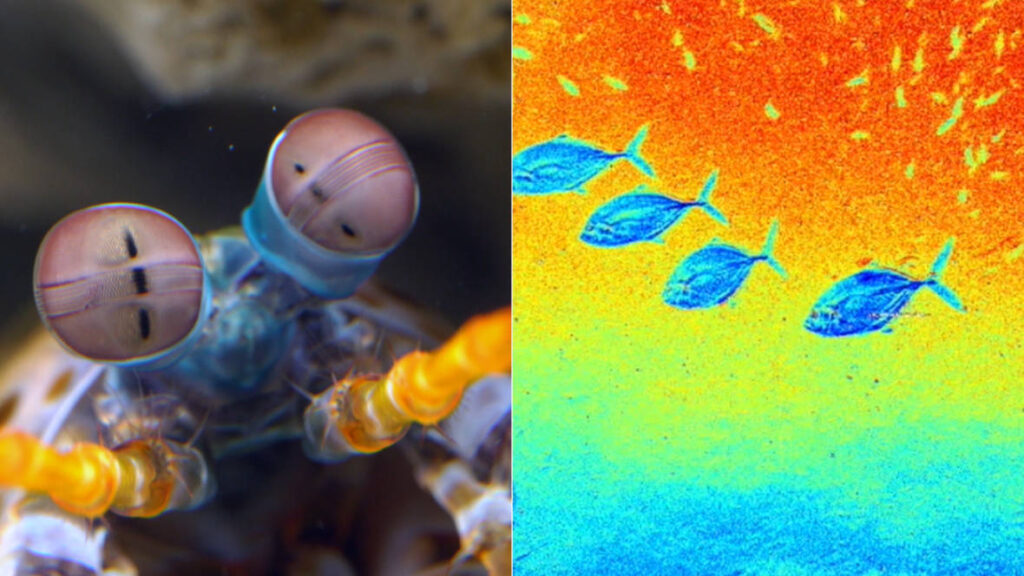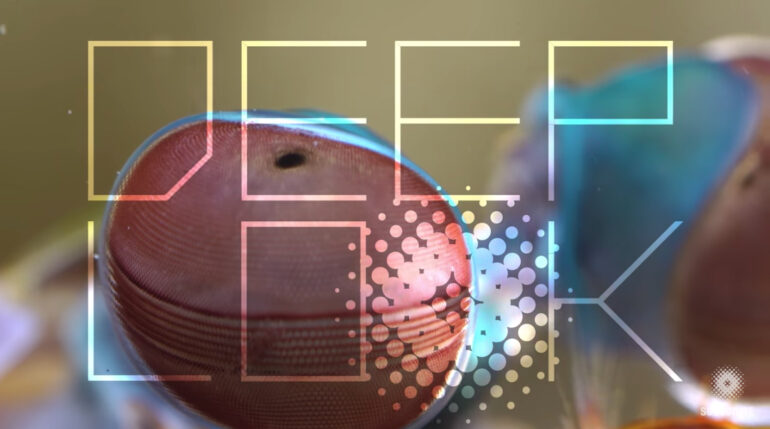The killer punch of the mantis shrimp is the fastest strike in the animal kingdom, a skill that goes hand in hand with its extraordinary eyesight. They can see an invisible level of reality using polarized light.
Thanks to the incredible eyesight of the mantis shrimp, a group of researchers are collaborating to build polarization cameras that could help in the early detection of cancer. These cameras see otherwise invisible cancerous tissues by detecting their polarization signature, which is different between diseased and healthy tissues.
“They have these ridiculous eyes that sense so many things at once,” said Sam Powell, a doctoral student in computer science and engineering at Washington University in St. Louis. “It’s been very interesting figuring out what we can do with that that helps out humans.”
Powell is part of a collaboration of engineers and wildlife biologists, co-led by Viktor Gruev at the University of Illinois at Urbana-Champaign, working on a set of mantis shrimp-inspired imaging technologies that could, among other applications, improve how doctors detect and treat certain cancers.

Polarization refers to the angle that light travels through space. When light from the sun enters the earth’s atmosphere, it comes in waves moving in all directions. Sometimes, it bounces off a surface that restricts, or polarizes, the shape of its movement.
Polarized light sometimes appears as glare, such as when light reflects off the ocean or a wet highway. Polarized eyeglasses can filter out these blinding reflections by blocking light from entering the eye at certain angles.
Though it’s invisible to the human eye, many animals see this quality of light, especially underwater. But mantis shrimp can see a special kind of polarization, called circular polarization. Scientists have found that some mantis shrimp species use circular polarization to communicate with each other on a kind of secret visual channel for mating and territorial purposes.
“Looking at nature can help us design better and more sensitive imaging techniques,” Gruev said.
The cameras, which are small enough for endoscopic use, can see polarization patterns on the surfaces of human and animal tissue. At the cellular level, fast-growing cancer cells are disorganized compared to healthy cells like skin and muscle. Because of the structural differences, healthy and diseased tissues react differently to polarized light.
These signs show up early with cancer, before cues that typically alert doctors. Current colonoscopy techniques, for example, employ black and white images to look for abnormal shapes, such as polyps. But sometimes, cancerous tissue in the colon is flat, blending in with healthy tissue.
DEEP LOOK is a ultra-HD (4K) short video series created by KQED San Francisco and presented by PBS Digital Studios. See the unseen at the very edge of our visible world.



